
Want reliable holiday color without fussy plants? With Zygocactus Care Indoors, you’ll turn a bright window into a year-round bloom show.
In just a few simple habits, you’ll enjoy vibrant flowers, low-stress upkeep, and plenty of cuttings to share with friends.
Check out our guide to Zygocactus Care Indoors! From light requirements to propagation tips, we’ve got you covered. Here’s some quick tips to get you started:
- To grow Zygocactus or Schlumbergera indoors, place the plant in a well-lit area but out of direct sunlight.
- Use well-draining soil and water sparingly, allowing the soil to dry out between waterings.
- This cactus prefers temperatures between 60-70°F and benefits from regular fertilizing during the growing season.
Hey there, plant enthusiasts! Are you ready to take your indoor gardening game to the next level?
If so, it’s time to dive into the world of Zygocactus Care Indoors.

American Plant Exchange Live Christmas Cactus – 6-Inch Pot Cover – Easy Care Flowering Succulent with Festive Blooms for Holiday Home Décor, Kitchens, Offices & Indoor Winter Displays
These vibrant, colorful plants are a great way to brighten up your living space, and with a little bit of know-how, you can keep them healthy and thriving all year round.
So grab your gardening gloves and get ready to learn all about the ins and outs of zygocactus care!
Zygocactus Care Indoors

Hey there, plant lovers! Are you looking to add a touch of tropical flair to your indoor space?
Whether you’re a seasoned gardener or just starting out, taking care of plants indoors can be a fun and rewarding experience.
That’s why today, we’re diving into the world of Zygocactus care indoors!
Also known as the Schlumbergera, this colorful plant is perfect for bringing a little bit of the outdoors inside.
So get ready to learn all about zygocactus care and how you can make sure your plant thrives in your indoor environment.
Schlumbergera: An Overview
The Schlumbergera genus is made up of six to nine species of cacti that are native to the coastal mountains of southeastern Brazil.
These plants are known for their leaf-like pad stems and flowers that bloom from areoles on the joints and tips of the stems.
The most popular cultivars of Schlumbergera are the Christmas cactus and Thanksgiving cactus, which are commonly used as houseplants during the holiday season.
Zygocactus Plant Care Reference Guide
| Characteristic | Details |
|---|---|
| Common Name | Zygocactus, Christmas Cactus, Thanksgiving Cactus, Holiday Cactus |
| Botanical Name | Schlumbergera truncata and hybrids |
| Native Habitat | Coastal mountains of southeastern Brazil, growing as epiphytes in rainforests |
| Plant Type | Epiphytic cactus, perennial houseplant |
| Growth Pattern | Trailing, segmented stems with arching or cascading form |
| Mature Size | 12–18 inches tall, 2–3 feet wide with cascading stems |
| Watering | Keep slightly moist; water when top inch of soil is dry. Avoid soggy soil. |
| Light/Sun Exposure | Bright, indirect light; protect from harsh direct sun |
| Soil Type | Well-draining mix; cactus/succulent mix with coco coir and perlite is ideal |
| Soil pH | Slightly acidic, 5.5–6.5 |
| Temperature | 60–70°F (16–21°C); cooler nights (50–55°F) can trigger blooming |
| Humidity | Prefers moderate to high humidity; thrives in 50–60% |
| Bloom Time & Flower Color | Blooms in late fall to winter; flowers in pink, red, white, orange, or purple |
| Potential Problems | Overwatering/root rot, mealybugs, spider mites; leaf drop from drafts or stress |
| Repotting | Every 2–3 years after blooming; use slightly larger pot with fresh mix |
| Hardiness Zones (USDA) | 10–12 (commonly grown indoors as houseplant in cooler zones) |
Cultivars and Groups of Christmas Cactus
While the Christmas cactus and Thanksgiving cactus are often used interchangeably, they are actually two different cultivars of the Schlumbergera genus.
The Christmas cactus is a member of the Buckleyi Group, while the Thanksgiving cactus belongs to the Truncata Group.
The Buckleyi Group has more symmetrical flowers that hang down below the horizontal, while the Truncata Group has pointed teeth on their stems and flowers that are held more or less horizontally.
Other common names for these cacti include crab cactus and holiday cactus.
In Brazil, they are known as Flor de Maio, or May flower, reflecting the time of year when they bloom in the Southern Hemisphere. More info on Wikipedia
Christmas Cactus vs. Zygocactus

Hey there, plant enthusiasts! If you’ve ever found yourself wondering about the difference between a Christmas cactus and a zygocactus, you’re not alone.
While these terms are often used interchangeably, they actually refer to two different cultivars of the Schlumbergera genus.
The Christmas cactus is a member of the Buckleyi Group, while the zygocactus (also known as the Schlumbergera truncata) belongs to the Truncata Group.
Despite their differences, both of these cacti make great houseplants and can add a vibrant pop of color to your indoor space.
So let’s dive in and take a closer look at the unique characteristics of each plant!
The Confusion Between Names and Species
The confusion between Christmas cactus, Thanksgiving cactus, and zygocactus often arises because these names are used interchangeably to describe different Schlumbergera cultivars.
This can be especially confusing for plant enthusiasts who are new to the hobby, but with a little bit of knowledge, it’s easy to distinguish between the different varieties.
Christmas Cactus and Thanksgiving Cactus as Schlumbergera Cultivars
You Can Buy Zygocactus On Amazon
It’s important to note that both Christmas cactus and Thanksgiving cactus are actually cultivars of the Schlumbergera genus, rather than separate species.
While they have some differences in appearance and blooming time, they share many similar care requirements and can both thrive indoors with the right conditions.
Zygocactus as an Alternative Name for Schlumbergera
Zygocactus is another name that is sometimes used to refer to the Schlumbergera truncata cultivar.
While it’s not a commonly used term, it’s still important to know in case you come across it in your plant research.
No matter what you call it, though, this colorful cactus is a great choice for indoor gardening and can bring a little bit of tropical flair to your living space.
Zygocactus Light Requirements
Hey there, plant lovers! If you’re considering adding a zygocactus (or Schlumbergera truncata) to your indoor plant collection, you might be wondering what kind of light requirements this colorful cactus needs to thrive.
While it’s true that zygocacti do require a certain amount of light to grow and bloom, they can be relatively easy to care for with the right conditions.
In this section, we’ll take a closer look at zygocactus light requirements and how you can make sure your plant gets the light it needs to thrive.
Ideal Light Conditions for Zygocactus Growth and Flowering
To ensure that your zygocactus grows and blooms to its fullest potential, it’s important to provide it with the right amount of light.
These cacti thrive in bright, indirect light conditions, and can even handle some direct sunlight in the early morning or late afternoon.
If your zygocactus isn’t getting enough light, you may notice that it’s not blooming or that its stems are elongated and weak.
Potential Damage from Too Much or Too Little Light Exposure
While zygocacti do require light to grow and bloom, it’s also important to be mindful of potential damage from too much or too little light exposure.
Too much direct sunlight can scorch the leaves and flowers, while too little light can cause the plant to become weak and spindly.
It’s important to find the right balance of light for your zygocactus to thrive.
Tips for Finding the Right Balance of Light for Indoor Zygocactus Care
So how can you make sure your zygocactus is getting the right amount of light?
One simple tip is to place it near a sunny window that doesn’t get direct sunlight for long periods of time.
You can also try moving the plant around to different locations in your home to see where it grows best.
If you notice that your zygocactus isn’t blooming or seems to be struggling, it might be a sign that it needs more or less light.
With a little bit of trial and error, you can find the perfect spot for your zygocactus to thrive!
Zygocactus Soil
Hey there, plant lovers! If you’re looking to add a zygocactus (or Schlumbergera truncata) to your indoor plant collection, it’s important to know what kind of soil this colorful cactus needs to thrive.
Zygocacti are known for their unique, flattened stem segments and showy, colorful blooms, but they need a specific type of soil to grow and flourish.
In this section, we’ll take a closer look at zygocactus soil requirements and how you can create the ideal growing medium for your plant.
Preferred Soil Types for Zygocactus Growth
Zygocacti thrive in a well-draining soil mix that’s rich in nutrients but doesn’t hold too much moisture.
While some commercial potting soils can work well for zygocacti, many indoor plant enthusiasts prefer to create their own soil mix using ingredients like coco coir and perlite as an alternative to peat moss or peat-based soil mixes.
These alternative ingredients can be more environmentally sustainable and can help prevent overwatering.
Soil Drainage Needs
One of the most important factors to consider when choosing soil for your zygocactus is drainage.
These plants don’t like to be sitting in soggy soil, as this can lead to root rot and other problems.
It’s important to choose a soil mix that drains well and allows excess water to flow freely out of the pot.
Tips for Creating a Suitable Soil Mix for Indoor Zygocactus Care
To create a suitable soil mix for your zygocactus, you can start with a base of peat moss or coco coir and add in another lightweight organic material.
Mix in perlite or sand to improve drainage, and add a slow-release fertilizer to provide your plant with the nutrients it needs.
Aim for a soil mix that’s loose and well-aerated, but also retains enough moisture to keep your zygocactus healthy and hydrated.
With the right soil mix and proper watering habits, your zygocactus can thrive for years to come!
Why coco coir is a more environmentally friendly alternative
Coco coir is often considered a more environmentally friendly alternative to peat moss because it’s made from the fibrous outer husk of coconut shells, a renewable resource.
In contrast, peat moss is harvested from bogs, which are important natural habitats for many species of plants and animals.
The harvesting of peat moss can cause significant damage to these fragile ecosystems, including the release of carbon dioxide and other greenhouse gases into the atmosphere.
Additionally, the harvesting process can take many years, leading to a depletion of these important resources.
Using coco coir instead of peat moss can help reduce the environmental impact of your indoor gardening practices.
Plus coco coir and perlite work great for zygocactus and in my opinion are better than sphagnum peat.
Zygocactus Watering
When it comes to zygocactus care, watering is a crucial factor that can make or break your plant’s health and well-being.
These plants have unique water requirements that differ from other types of houseplants, so it’s important to understand how to water them properly.
In this section, we’ll cover everything you need to know about watering your zygocactus, including how often to water, how much water to use, and how to tell when your plant needs a drink.
So grab your watering can and let’s get started!
• Zygocactus prefers to be kept slightly moist, but not too wet or too dry.
Over-watering can lead to root rot and other fungal diseases, while under-watering can cause the plant to wilt and drop its leaves.
• To determine when it’s time to water your zygocactus, check the moisture level of the soil using a moisture meter or by sticking your finger into the soil up to the second knuckle.
If the soil feels dry, it’s time to water.
• When watering your zygocactus, use a watering can or a spray bottle to apply water slowly and evenly, avoiding getting water on the leaves.
Water until it starts to come out of the drainage holes at the bottom of the pot.
• The frequency of watering your zygocactus will depend on factors such as the size of the pot, the amount of light and humidity in the environment, and the time of year.
As a general rule, water your plant more often during the growing season (spring and summer) and less often during the dormant season (fall and winter).
• In addition to monitoring the soil moisture, keep an eye on your plant’s overall health and appearance.
If the leaves start to look droopy or discolored, or if you notice signs of over-watering or under-watering, adjust your watering schedule accordingly.
• To prevent over-watering, make sure your pot has adequate drainage holes and avoid letting your zygocactus sit in standing water.
You can also add perlite or sand to your soil mix to improve drainage.
By following these tips, you can ensure that your zygocactus gets the right amount of water to thrive and flourish indoors.
Why Is Tap Water Bad To Use?
Tap water can be used to water zygocactus, but it may contain minerals and chemicals that can accumulate in the soil and harm the plant over time.
It is best to use filtered or distilled water, or to let tap water sit for a day or two to allow any chemicals to dissipate before using it on your zygocactus.
This can help prevent mineral buildup and ensure that your plant stays healthy.
However, chloramines are a type of disinfectant that is commonly used in tap water to kill harmful microorganisms.
Unlike chlorine, which can evaporate from water, chloramines do not dissipate easily and can persist in water for longer periods.
Using tap water that contains chloramines can be harmful to plants, including zygocactus, as it can damage their root systems and overall health.
It’s recommended to use filtered, distilled, or rainwater to avoid any negative effects from chloramines in tap water.
Zygocactus Propagation
If you’re a fan of zygocactus, you might want to consider propagating your plant to share with friends or expand your collection.
Luckily, zygocacti are relatively easy to propagate through stem cuttings, and you don’t need any special equipment or skills to get started.
In this section, we’ll explore the process of propagating zygocactus and share some tips to help you succeed in growing new plants from cuttings.
Zygocactus Propagation Methods:
There are a few different methods you can use to propagate your zygocactus, but stem cuttings are the most popular and easiest option.
You can take a cutting from a healthy zygocactus plant at any time of year, although the best time is during the spring or summer when the plant is actively growing.
Stem Cutting and Callus Formation:
To propagate a zygocactus using a stem cutting, start by selecting a healthy, mature stem from the parent plant.
Using a clean, sharp pair of scissors or pruning shears, cut a section of stem that is about 2-3 segments long.
Be sure to make a clean cut and avoid crushing or damaging the stem.
Once you’ve taken your cutting, let it dry for a few days until a callus forms over the cut end.
This will help protect the cutting from rot and disease and encourage new roots to form.
Personally, I don’t wait for callus formation and just plant my cuttings straightaway into moist coco.
You can dip the end in rooting powder but this is usually not needed as the cuttings root easily. Follow the care instructions below to care for your cutting.
Rooting and Caring for New Zygocactus Plants:
After your cutting has formed a callus, it’s time to plant it in a suitable potting mix.
Choose a well-draining mix that contains peat moss, perlite, or coco coir, and plant the cutting so that it is buried about an inch deep in the soil.
Water the cutting lightly and place it in a bright, but indirect, spot with consistent, warm temperatures.
Mist the cutting occasionally to help increase humidity and encourage root growth.
With proper care and attention, your zygocactus cutting should start to develop new roots within a few weeks.
After a few months, your new plant should be well-established and ready to transplant into a larger pot or give to a friend.
Division
Division is a less common propagation method for zygocactus. Stem cutting is the most common and reliable method for propagating zygocactus.
However, if a zygocactus plant has become too large for its pot and needs repotting it is possible to divide the plant into smaller sections and repot them separately.
This should be done carefully to avoid damaging the roots, and the resulting smaller sections may take longer to establish and flower.
Pests and Diseases
No plant is immune to pests and diseases, and zygocactus is no exception.
While they are generally considered relatively low-maintenance and disease-resistant, it’s important to keep an eye out for any signs of trouble.
In this section, we’ll explore some of the most common pests and diseases that can affect zygocactus and offer tips for prevention and treatment to help keep your plants healthy and thriving.
Pests:
Zygocactus is susceptible to a few common pests, including aphids, spider mites, and mealybugs.
These tiny insects can suck the sap out of the plant, causing stunted growth, yellowing leaves, and even death if left untreated.
Aphids and spider mites can be treated with insecticidal soap or neem oil, while mealybugs can be removed by wiping them off with a cotton swab dipped in rubbing alcohol.
Diseases:
Fungal infections are the most common type of disease that can affect zygocactus. This can cause stem and root rot, which can be fatal if left untreated.
Overwatering and poor drainage can increase the risk of fungal infections.
To prevent this, make sure your zygocactus is planted in well-draining soil and water it only when the top inch of soil feels dry to the touch.
Prevention and Treatment:
The best way to prevent pest and disease problems is to maintain good growing conditions for your zygocactus.
This includes providing the right amount of light, water, and nutrients.
Regularly inspect your plants for signs of pests or diseases, such as yellowing leaves, brown spots, or webbing.
If you do notice a problem, take action quickly to prevent it from spreading.
There are a variety of organic and chemical treatments available for common pests and diseases, so do your research and choose the one that’s right for you and your plants
Treatment options for insect pests
Common treatment options for insect pests on zygocactus include insecticidal soaps and oils, as well as systemic insecticides.
Insecticidal soaps and oils work by suffocating or dehydrating the pests, while systemic insecticides are absorbed by the plant and can provide longer-lasting protection.
It is important to carefully follow the instructions on the label when using any pesticide and to avoid spraying the plant in direct sunlight or during times of extreme heat or cold.
In severe infestations, it may be necessary to physically remove the affected portions of the plant or even discard the entire plant to prevent the infestation from spreading to other plants.
Neem oil
Neem oil is a common treatment option for insect pests on zygocactus.
Neem oil is a natural insecticide derived from the seeds of the neem tree and is considered safe for use on plants.
It works by disrupting the feeding and reproductive processes of the pests, ultimately leading to their demise.
Neem oil can be applied as a foliar spray or soil drench, and it is important to follow the instructions on the label for proper application and dilution rates.
Like with any pesticide, it is important to use neem oil with caution and avoid spraying in direct sunlight or during extreme temperatures.
Zygocactus Repotting
Repotting your zygocactus is an essential part of indoor plant care.
As your plant grows, it will need more space to thrive and stay healthy.
Repotting can also help refresh the soil and remove any buildup of mineral salts.
In this section, we’ll discuss when to repot your zygocactus, how to do it properly, and what soil mix to use.
So, let’s dive into the world of zygocactus repotting!
Repotting Zygocactus: When and Why
Over time, zygocactus can outgrow their pots and require repotting.
Signs that a plant may need to be repotted include roots growing out of the bottom of the pot, the plant tipping over, or the soil becoming depleted and compacted.
Repotting provides the plant with fresh soil, nutrients, and space to grow.
Choosing the Right Pot and Soil
When repotting zygocactus, it’s important to choose a pot that is slightly larger than the current one, with good drainage holes to prevent overwatering.
It’s also important to use well-draining soil, such as a mixture of coco coir and perlite, or use a commercial cactus mix.
Tips for Safe Repotting
When repotting zygocactus, it’s important to handle the plant with care to avoid damaging the roots.
Gently remove the plant from the old pot, loosen any tightly wound roots, and add fresh soil to the bottom of the new pot before placing the plant in the center.
Fill in the remaining space with fresh soil, leaving enough room at the top to water the plant.
Finally, give the plant a thorough watering and place it in a spot with bright, indirect light to help it adjust to its new home.
Zygocactus FAQs
Zygocactus, also known as Christmas cactus or Schlumbergera is a popular houseplant cherished for its beautiful, tubular flowers that typically bloom around the holiday season.
If you’re interested in adding a Zygocactus to your indoor plant collection, you might have several questions about its care requirements, ranging from watering to light exposure.
Let’s delve into some frequently asked questions to set you up for Zygocactus success.
Q: How often do you water a Zygo cactus?
A: Water your Zygocactus when the top inch of the soil feels dry to the touch. Overwatering can lead to root rot, so it’s better to err on the side of caution.
Q: Do Zygocactus like sun or shade?
A: Zygocactus prefer bright, indirect light. Direct sunlight can scorch the leaves, while too little light can prevent flowering.
Q: How do you keep a Zygocactus alive?
A: Provide bright, indirect light, and water sparingly, and maintain indoor temperatures between 60-70°F. Fertilize with a balanced, water-soluble fertilizer during the growing season.
Q: Where should I put a Christmas cactus indoors?
A: Place it in a spot with bright, indirect light, such as an east or north-facing window, where it’s away from drafts and heat vents.
Q: What triggers a Christmas cactus to bloom?
A: A period of darkness and cooler temperatures for about 6 weeks can stimulate blooming. Reduce water and keep the plant in a room with a temperature of 50-55°F during this period.
Zygocactus Care Indoors Final Thoughts

Red Christmas Cactus Plants Live, 4 to 6 Inch Tall Live Christmas Cactus Bare Roots, Perennial Well Rooted Flower Plants, Holiday Houseplant, No Pot
And that’s it! We’ve covered all the basics of zygocactus care indoors.
With the right light, soil, watering, and pest management, your Christmas cactus or Thanksgiving cactus can thrive and produce beautiful blooms year after year.
Don’t forget to give your plant some love and attention, and it will reward you with stunning flowers in shades of pink, red, white, and more.
With these tips and tricks, you’ll be a pro at zygocactus care in no time!
Summary of zygocactus care indoors tips:
To summarize the key points of indoor zygocactus care, it’s important to keep in mind the following:
• Zygocactus needs bright, indirect light to thrive, but too much direct sun can damage the leaves.
• The ideal soil for zygocactus is well-draining and slightly acidic, and coco coir and perlite can be used as an eco-friendly alternative to peat moss.
• Water zygocactus only when the top inch of soil is dry, and avoid over-watering as it can lead to root rot.
• Propagation can be done through stem cuttings, which need to be callused before planting in well-draining soil.
• Common pests such as aphids, spider mites, and mealybugs, as well as fungal diseases, can affect zygocactus, so it’s important to monitor the plants and treat them promptly if necessary.
• Repotting should be done only when necessary, using suitable pots and soil to avoid damaging the roots.
Final thoughts on indoor zygocactus care and cultivation:
Overall, zygocactus is a beautiful and rewarding plant to grow indoors, especially during the winter months when it produces its colorful blooms.
With proper care and attention, you can enjoy your zygocactus for many years to come.
Remember to keep it in a bright but protected spot, water it sparingly, and check for pests and diseases regularly. Happy zygocactus growing!
You Can Buy Zygocactus On Amazon
Read about the benefits of keeping houseplants
🌵 Indoor Succulents Growing Guides
From quirky “living stones” to elegant echeverias, discover care guides, benefits, and unique succulents perfect for brightening your indoor space.
-
- 🍬 Jelly Beans Succulent Care
- 💧 How to Care for Aloe Plants Indoors
- 🎄 Zygocactus (Christmas Cactus) Care Indoors
- 🐾 Bear Paw Succulent Care
- 🌱 Dwarf Jade Plant Care
- 🪨 Lithops (Living Stones) Plant Care
- 🌼 Echeveria Care Indoors
- 🥒 Pickle Plant Succulent Care
- 🕯️ Candlestick Plant (Succulent) Care
- 🐠 Fishbone Cactus Care
- 🌿 Burro’s Tail Plant Care
- 🌙 Moonstone Succulent Care
- 🦴 Dancing Bones Cactus Care
- ✨ Echeveria Elegans Benefits
- 🌹 Crown of Thorns Cactus Care
- ⭐ Echeveria Orion Care
- See all articles in our Indoor Succulents category




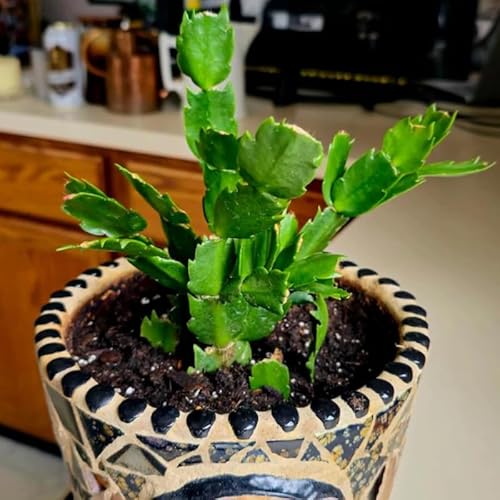

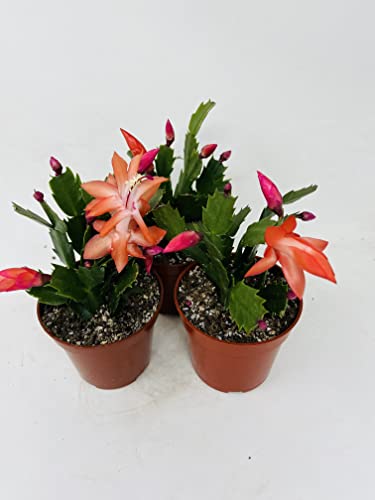

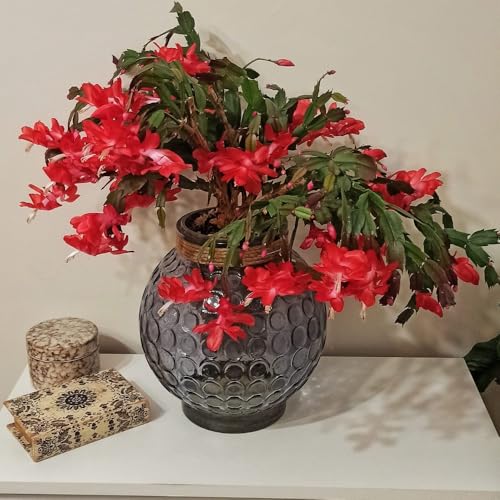
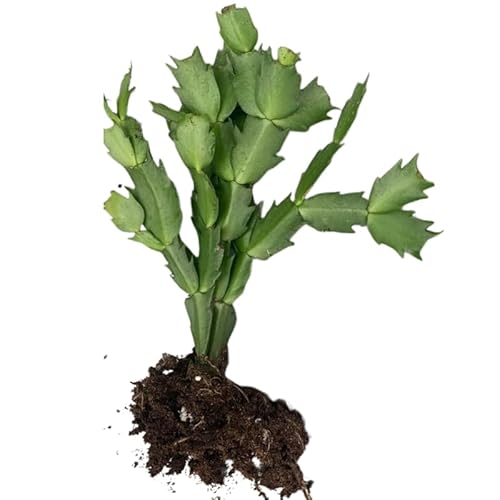

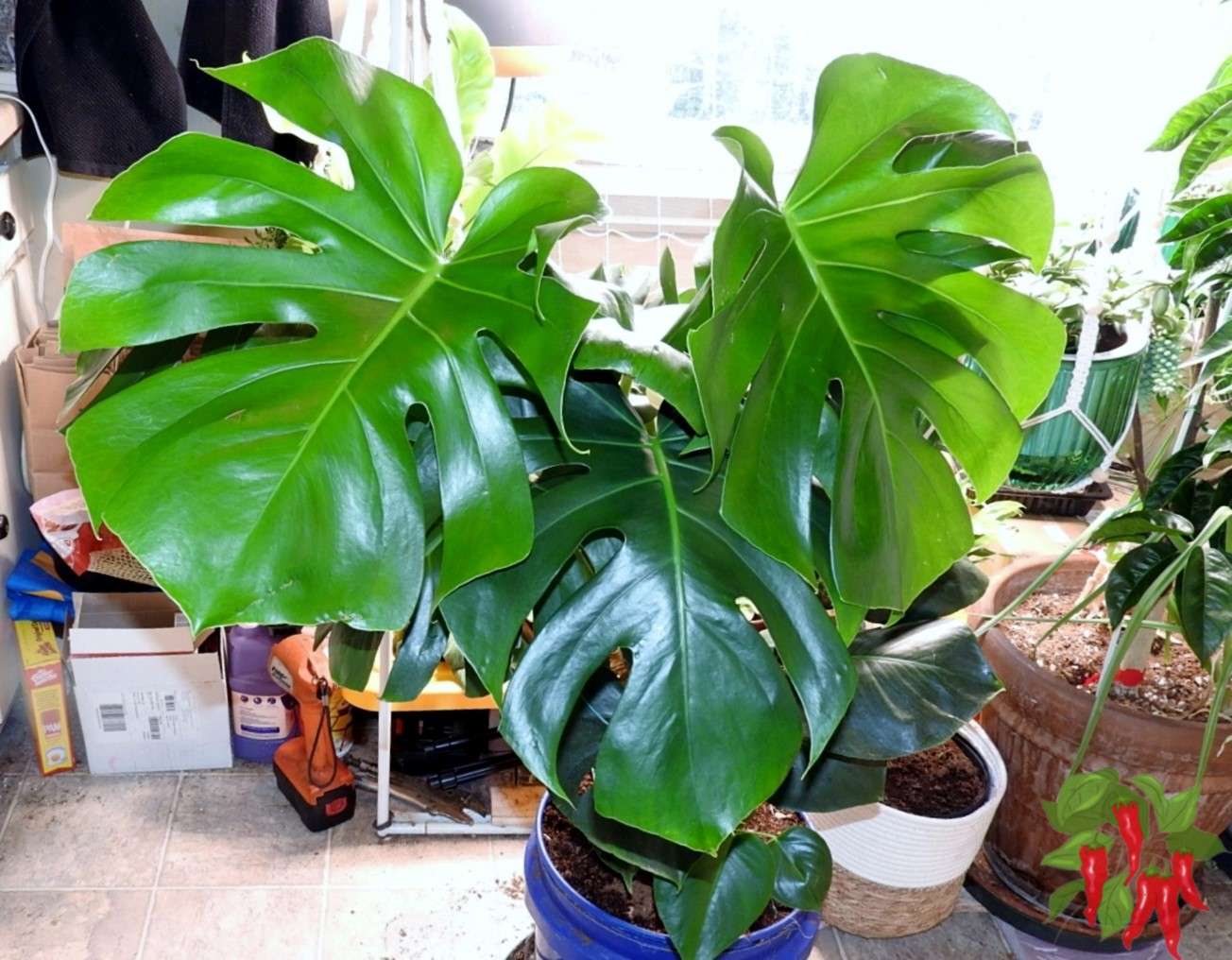
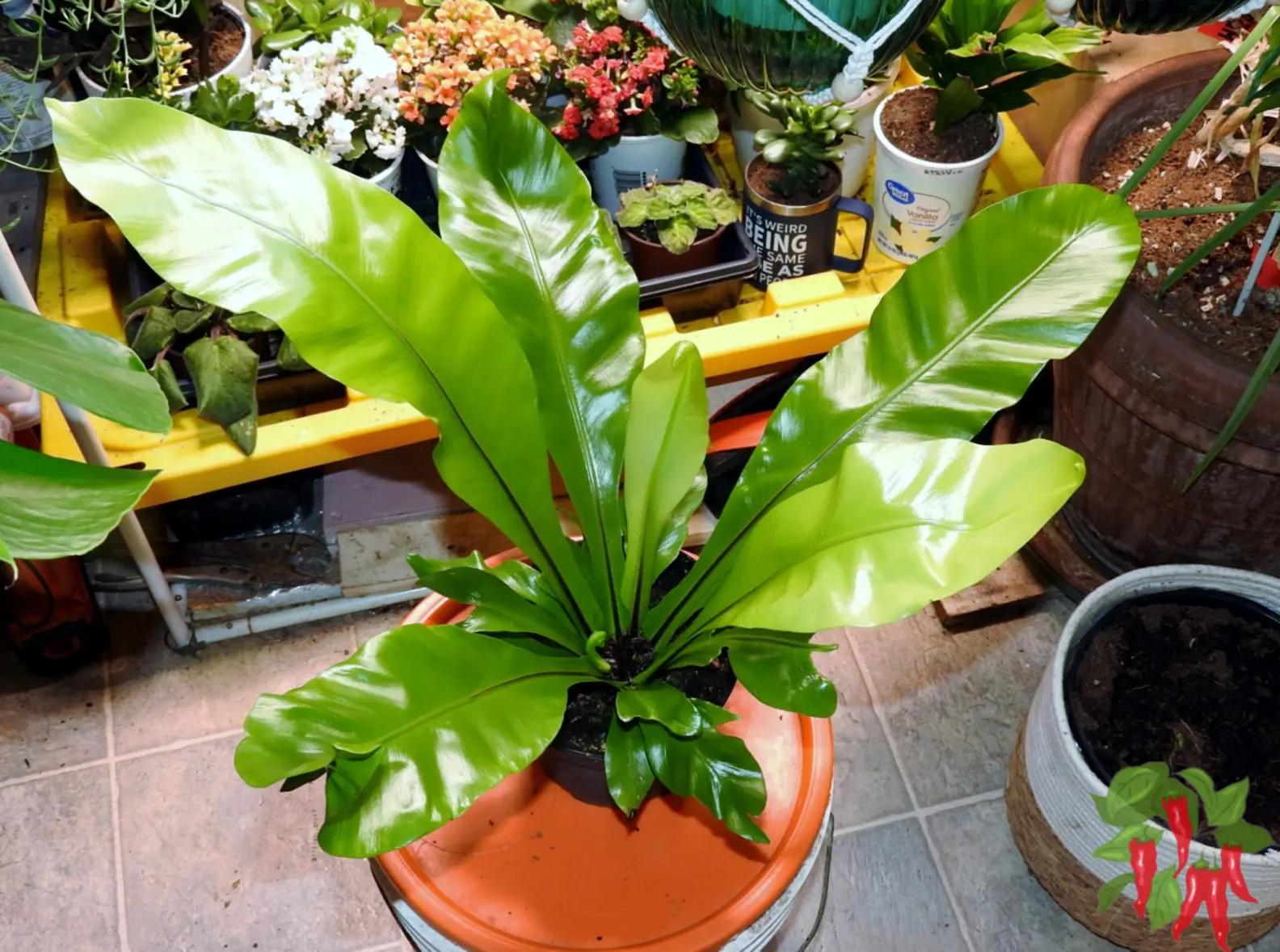
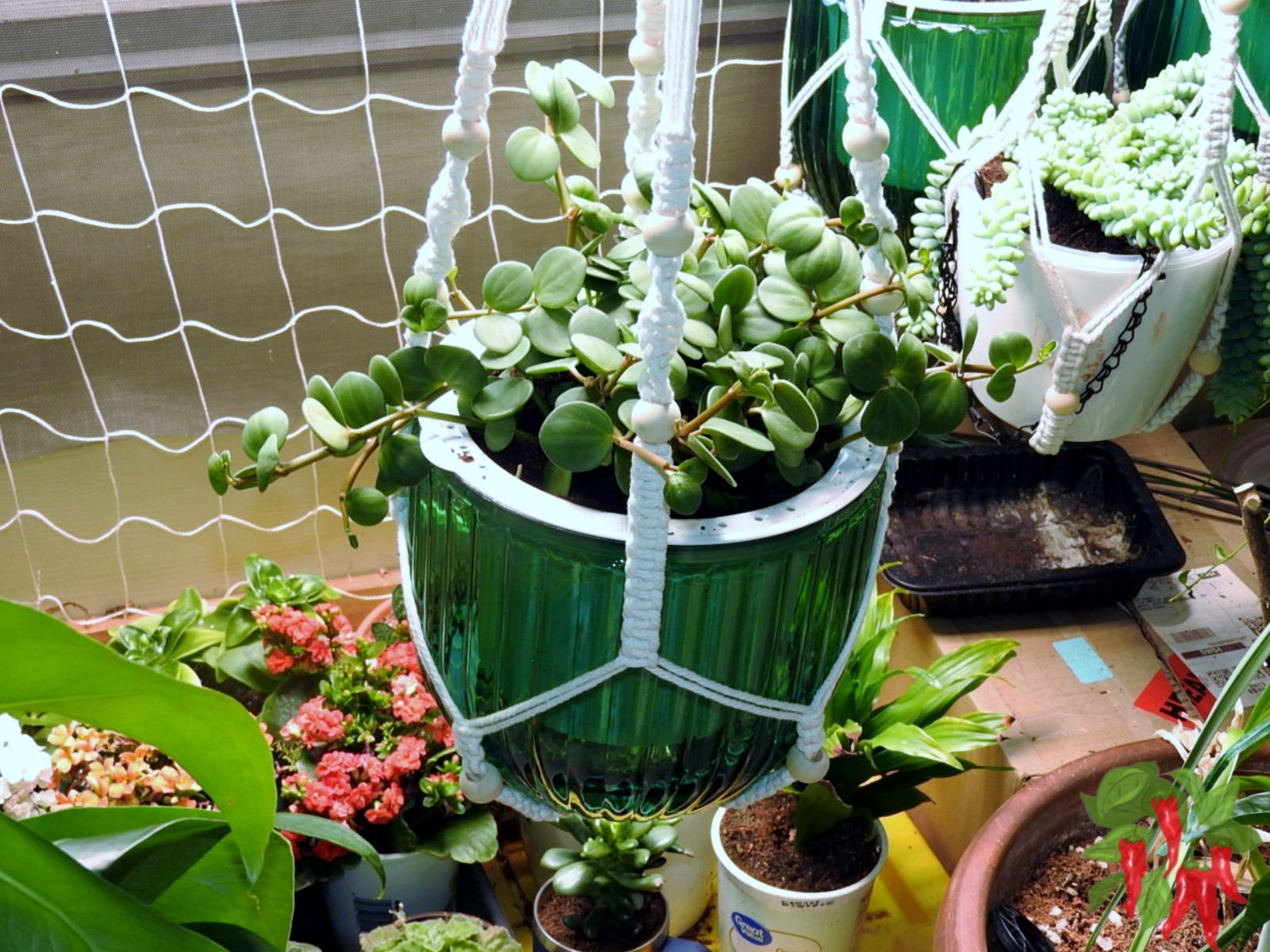
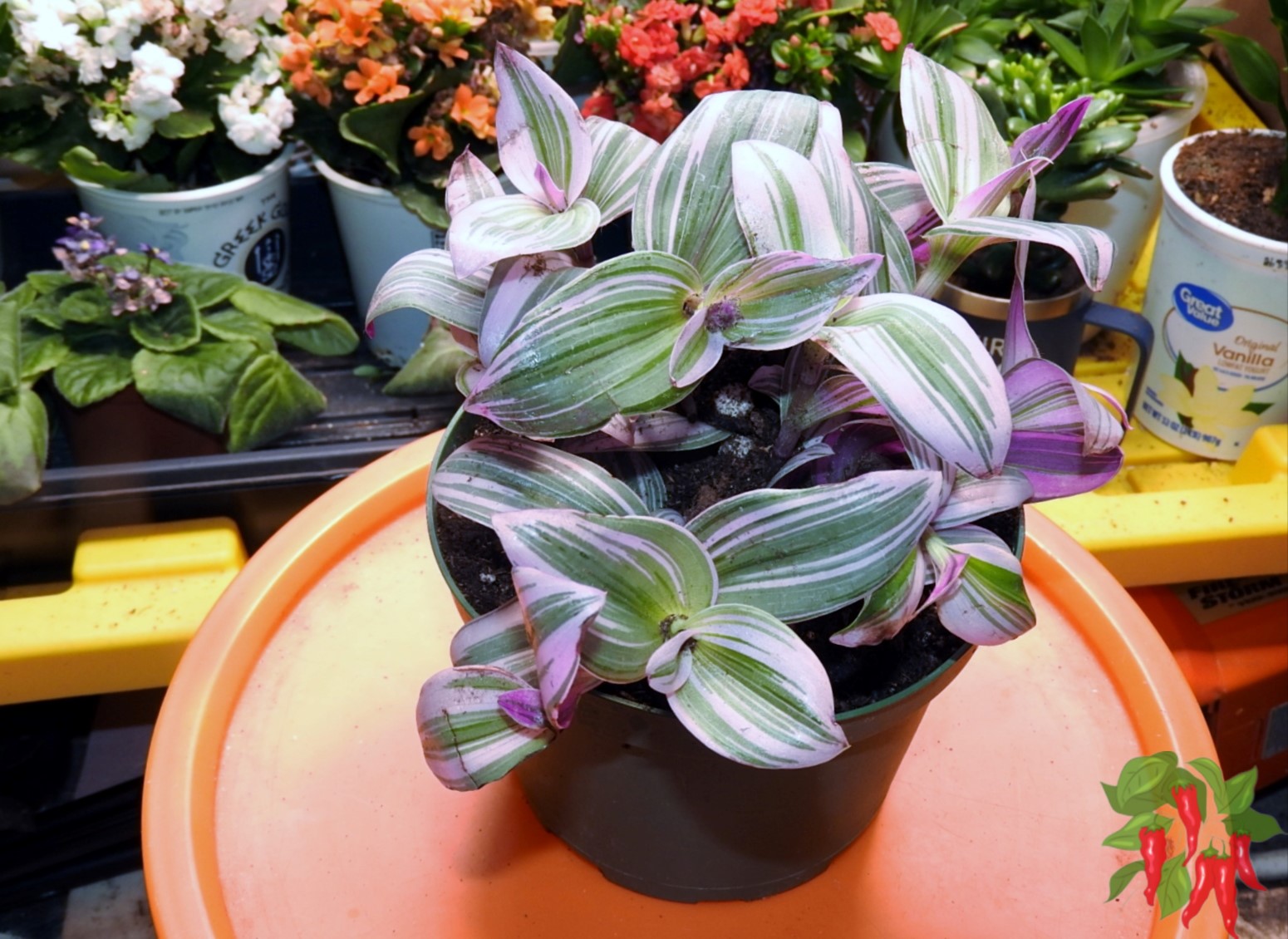
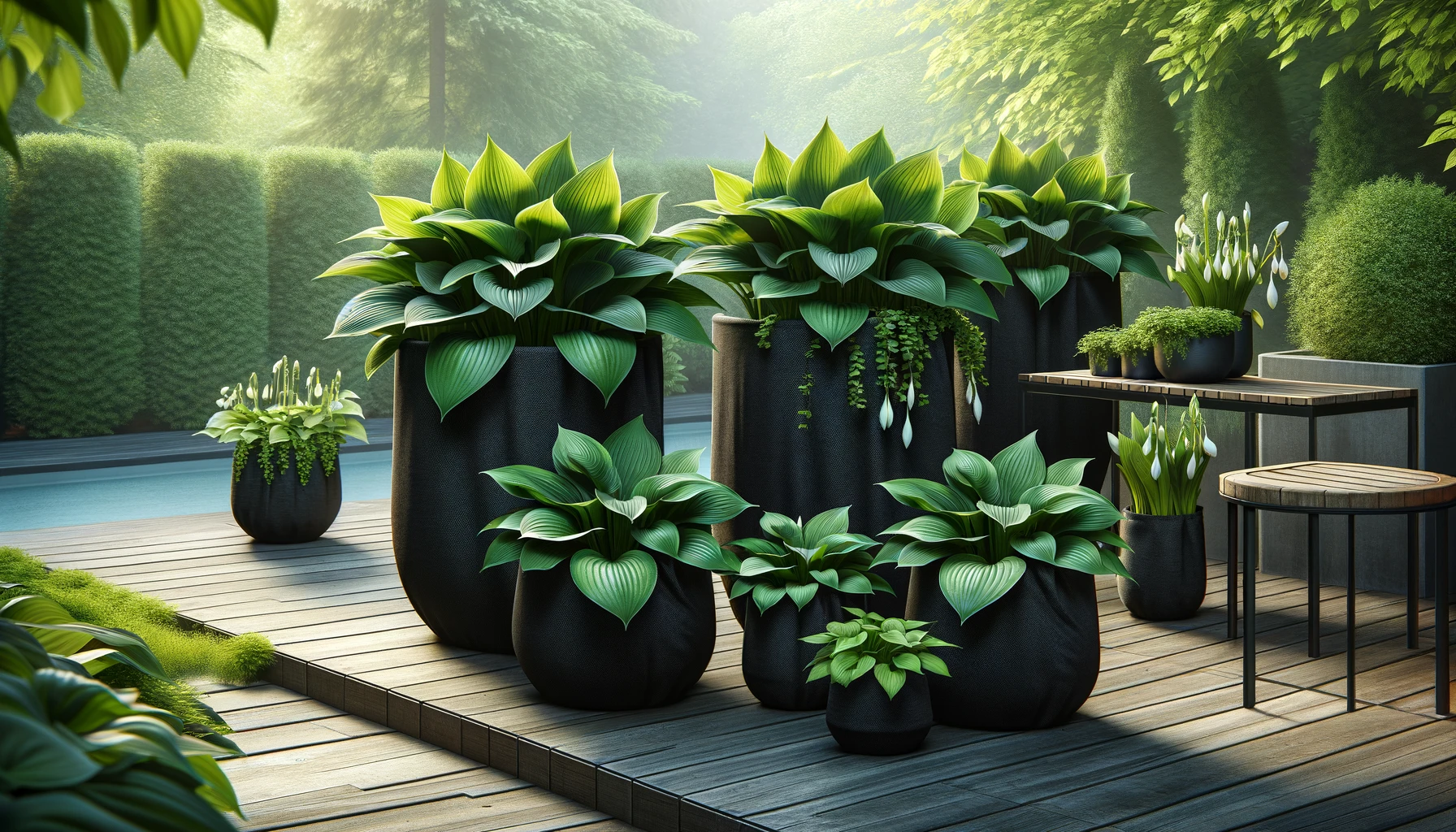
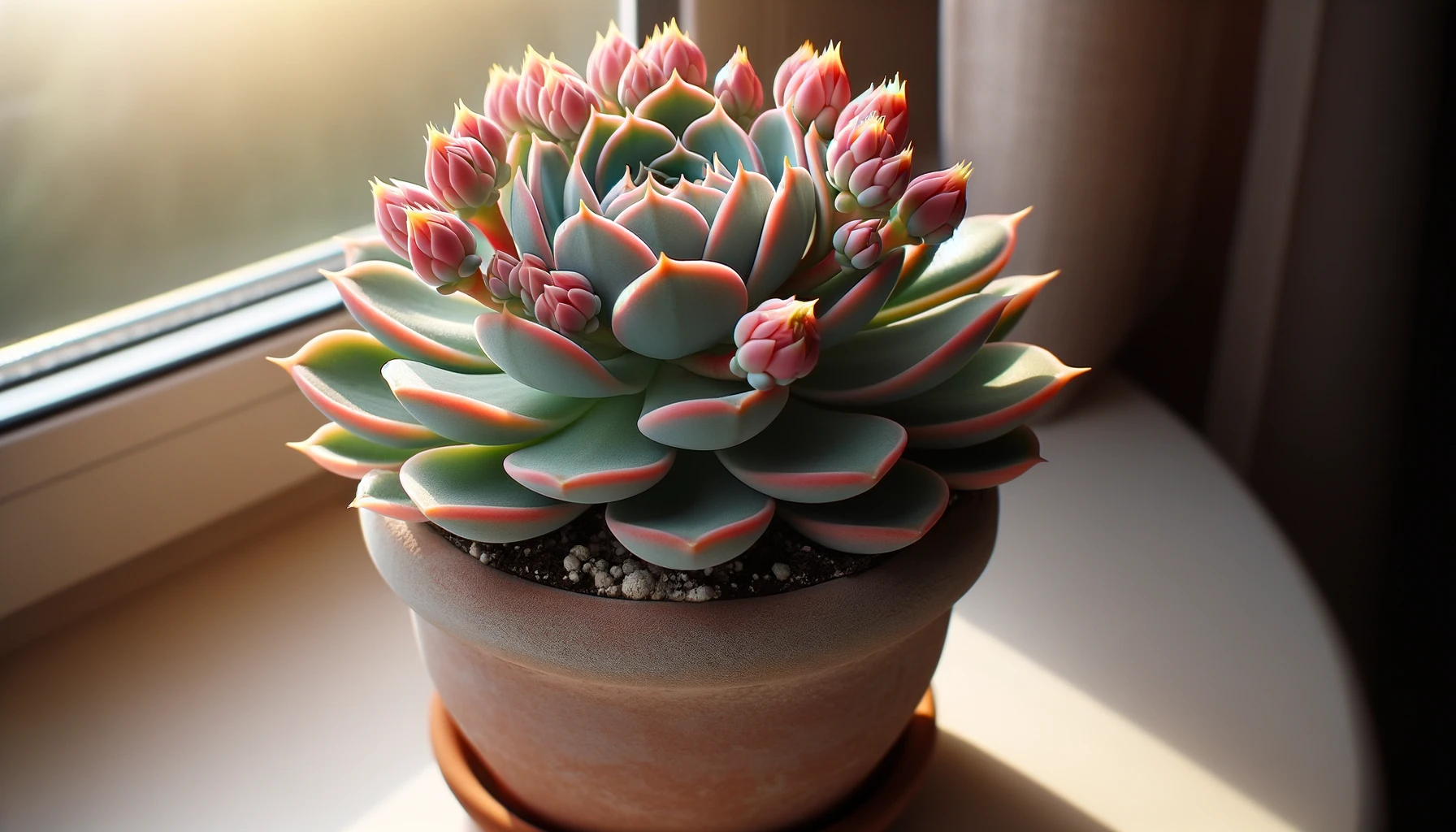
 Steve S. is the creator of
Steve S. is the creator of